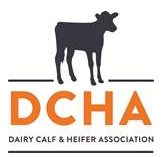
 New research from the University of Georgia looks at the effect of milk replacers formulated with alternative carbohydrate sources on calf health and performance. The findings were published this month in The Professional Animal Scientist.
New research from the University of Georgia looks at the effect of milk replacers formulated with alternative carbohydrate sources on calf health and performance. The findings were published this month in The Professional Animal Scientist.After receiving colostrum and transition milk for two days, 80 Holstein calves were randomly assigned to one of four milk replacers that differed in carbohydrate source:
- Control diet: All whey (41 percent lactose)
- Diet 2: Whey, plus 20 percent corn syrup solids (25 percent lactose)
- Diet 3: Whey, plus 10 percent corn syrup solids (33 percent lactose)
- Diet 4: Whey, plus 10 percent corn syrup solids and 10 percent dextrose (25 percent lactose)
All milk replacers were fed at a rate of 0.57 kilograms per day (about 1.25 pounds per day) divided into two equal feedings, except during week 6 when milk replacer was reduced by 50 percent. Calves were weaned at the end of week six. Calves were given ad libitum access to calf starter during the study.
The researchers found that intake of milk replacer and starter was similar among treatments. Calves fed Diet 2 initially consumed slightly less starter than calves fed the control diet, but the rate of increase in grain intake was similar across treatments. They also observed that carbohydrate source did not affect calf growth.
In terms of health, carbohydrate source did not affect the odds of having higher fecal scores or number of days with scours. However, there were differences in the dynamics of a scours outbreak that occurred early in life at approximately the same time across treatments. The duration of scours was greater (~1.5 days) for calves fed Diets 2, 3, and 4, compared with calves fed the control diet.
"Overall, these results suggest that beyond a slight effect on scour outbreak duration, the inclusion of 10 to 20 percent corn syrup solids and dextrose has no negative effect on health and performance of newborn dairy calves from birth through weaning," say the researchers.
For more information, read an abstract of the research here.
10.23.2013